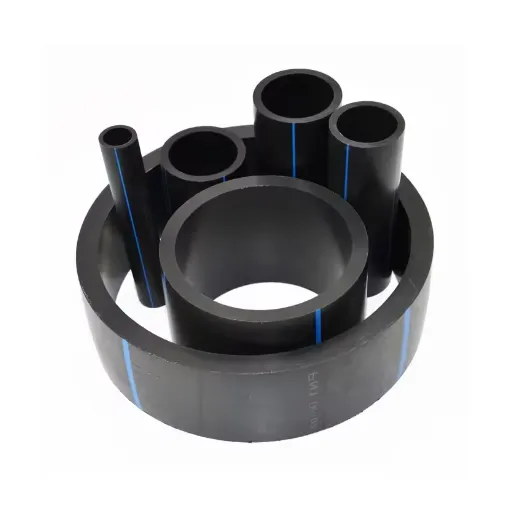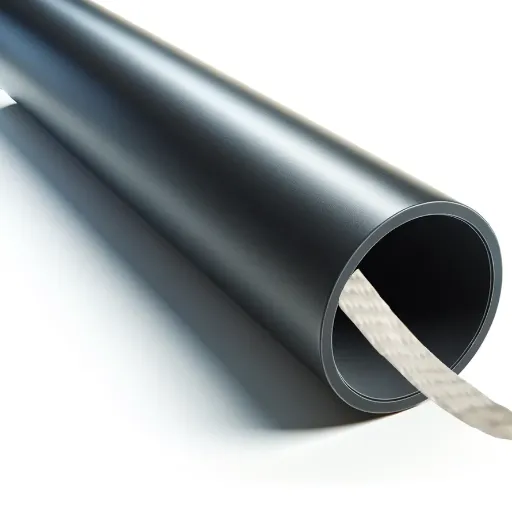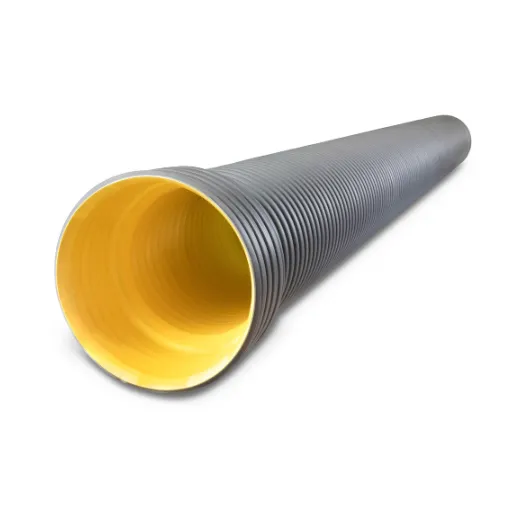When it comes to selecting materials for fluid transport systems, high-density polyethylene (HDPE) pipes stand out for their durability, flexibility, and resistance to corrosion. However, one critical factor that significantly impacts their performance is temperature. Understanding the temperature ratings of HDPE pipes is essential for ensuring their long-term reliability and efficiency across various applications. Whether you’re designing a municipal water system, an industrial pipeline, or an agricultural irrigation network, knowing how HDPE pipes respond to temperature variations can make the difference between optimal functionality and premature failure. This article dives deep into the technical aspects of HDPE pipe temperature ratings, offering comprehensive insights to help you make informed decisions and maintain system performance under diverse conditions.
What is the Temperature Resistance of HDPE Pipe?
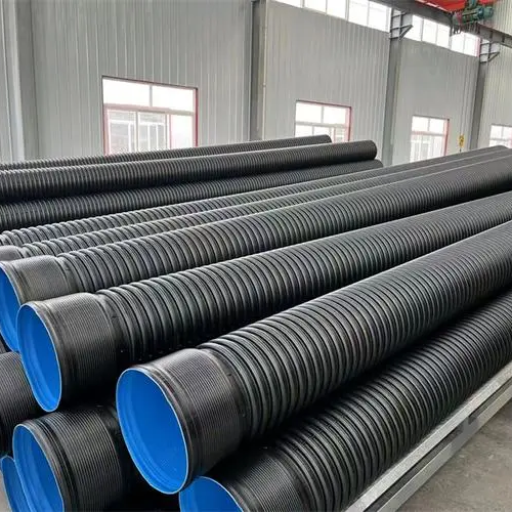
Image source:https://image.baidu.com/
Understanding the Temperature Limits
System, material, or organism failure and consequent malfunctioning are governed by the minimum and maximum temperature range as much as possible. This point is crucial as it tends to minimize accidents and guarantees the proper operation of systems and their limit of exploitation, especially in areas with extreme temperature conditions.
The effects tests included the thermal resistance evaluation, and the ability of the material to maintain its original size (-)or shape (+), and the deformation even under extreme temperatures. For example, most metals like stainless steel have the capability of working normally even at increased metal temperatures up to 1500°F (815°C), unlike some plastics such as polyethylene that soften at about 230°F (110°C). Therefore, for systems designed to achieve use for high energies, it is very important, among other things, to select materials that can work at critical temperatures.
However, biological systems usually exhibit typical, less extreme temperature ranges. The human body, for instance, is a system that is considered heat-tolerant between 97.7 and 99.5 degrees Fahrenheit (or 36.5-37.5 degrees Celsius). Slight dehydration, hypovolemia, orthostatic position, and many other forms of fatigue and stress can epileptics or heat sickness, examples of which can affect critical bodily functions. Therefore, measuring the tolerance limits of an individual is very important, especially in the fields of medicine, environmental biology, and even in public management and safety, so that risk management is implemented and total system integrity is upheld.
Performance in High Temperature Conditions
Working under high temperatures can affect both physical and cognitive abilities, and hence the overall output of an individual. The body at such temperatures needs to regulate temperature, which results in a shift of resources, such as blood to the skin and an increase in sweat secretion, leading to dehydration, and hence lowering energy availability. This impression was affirmed in the way reductions in performance, such as endurance and muscular strength, were observed when the core body temperature reached 38°C or 100.4°F, as continued exposure to heat causes muscle fatigue and diminished effectiveness of the heart-vascular system.
Conversely, cognitive alertness and awareness also decline when it high hot. Previous studies demonstrated that high temperature can affect one’s ability to concentrate, make logical decisions, recall things, and solve problems well, particularly if it is above 35°C or 95°F. And since a heat wave hinders heat loss and the patient, even the body, may be subjected to heat, reducing body temperature, and hence, even mental performance can be affected. As a result, prolonged stress makes these short-term functions even worse with the decrease of hydration and consequently oxygen needed for neurons.
Minimizing the influences of raised temperatures on productivity includes resorting to various measures with a focus on selected cooling mechanisms such as liquid intake, dress code, and rested intervals. The best format for solving occupational problems of environmental health is certain practice with tasks: occupational health professionals must be able to implement preventive strategies based on measurement results, rather than ignoring the situation. And in view of the severity of occupation restrictions, a combination of control and prevention measures with favorable changes in the work environment will ensure both physical fitness and intellect in the most unfavorable heat exposure situations.
Impact of Low Temperature on HDPE Pipes
High-Density Polyethylene (HDPE) pipes are widely used in various applications due to their durability and flexibility. No wonder, however, their performance correlates with the temperature exposure. It is logical that at low temperatures, the efficiency and working performance of HDPE pipelines decrease, basically due to the cold effect on the thermoplastic that leads to its stiffening. The latter aspect leads to a high risk of cracking and brittleness when the pipes are subjected to any mechanical stress, such as bending or impact.
Besides, the plastic contraction localized in the cold conditions with HDPE pipes may lead to changes in size, and this may result in joint misalignments or even excessive load on the fittings and connections. There are also cases of ice forming within the pipes, which worsen the situation. It is necessary to give them due regard in constructing such systems in geographical locations with cold or sub-zero temperatures. A well-designed support system and some issues of joint welds, as well as correct expansions or contractions, will provide the opportunity to minimize or eliminate these problems and raise the efficiency of the system further.
However, these obstacles – HDPE pipes remain favorable even in case of low temperatures like harsh winters because of, among others, the properties it retains in conditions of ice and or frost either within the pipe or around it. HDPE, with its low conductivity, is not prone to the threat of freezing inside the pipes under operational conditions, and this property helps aid in certain applications that are found in cold environments. Adhering to the manufacturer’s specifications, in some regions, the need for insulation or heating solutions allows the use of HDPE systems in low temperatures to be more efficiently enhanced.
How Does Pressure Affect HDPE Pipe at Different Temperatures?
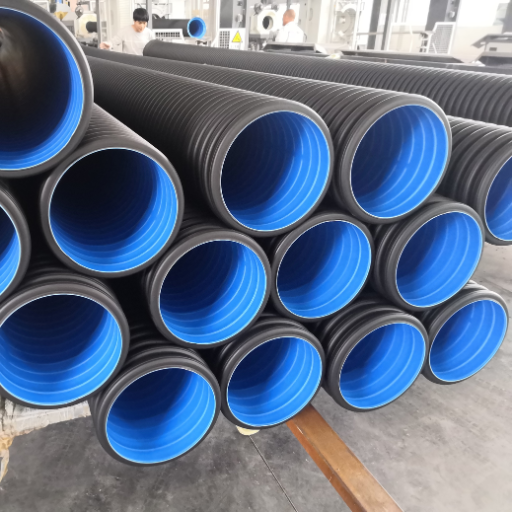
Temperature and Pressure Relationship
The laws of thermodynamics prize the effect of temperature on the pressure of a container. It is characterized by Gay-Lussac’s Law, which states, among others. According to which, under constant volume, the pressure of a gas is directly proportional to its absolute temperature, that is shown as P∝θ or P/θ is equal to some constant. If the gas gets hotter, it moves faster, and then the temperature of the pressure increases too.
This dynamic plays an essential role in many scientific as well as industrial practices. For example, in some pressurized equipment like gas storage tanks, where an increase in temperature may result in a considerable change in the internal pressure, it becomes necessary to utilize suitable materials and designs. Similar significance is seen in specific processes and technology, e.g., the way internal combustion engines are managed, where the pressure is increased to undertake some kind of mechanical activity as a result of the heat that is produced when the fuel is burnt.
In the more recent past, the advent of better computing has made it possible to analyze temperature-pressure properly, particularly in the most critical of industries like aerospace and chemical processes. Presently, in-dash simulators also employ AI and sensor technologies combined with real-time forecasting to protect the equipment in changing temperatures. These advances reinforce the importance of the comprehension of the importance of the norm since the background technology context demands that any given T/P relationship should be analysed very carefully if one is seeking to achieve high performance and avoid condemning the apparatus.
Working Pressure Ratings
At the most basic level, working pressure ratings help outline how much force, such as pressure, a pipe, a valve, or a vessel can bear, while in service, without resulting in its rupture or failure. This factor is extremely important in laying pipelines to ensure the systems perform as expected, as well as in repair and maintenance, so as not to endanger any life. The aforementioned working pressure rating is determined by various factors, one of which can be the material used, oxygen temperature, thickness of the walls of the component, and environmental conditions.
For example, in the design of piping systems, it is expected that most carbon steel pipes which are covered by ASME B31.3 will be designed in such a way that the maximum allowable stresses will be calculated, accounting for both the strength of the material and a temperature-dependent derating factor as per the standard requirements, for examples and further explanation. At the same time, the pressure ratings of the working stainless steel valves are given in the specific instructions contained in the respective ANSI/ASME recommendations. Valves are commonly made for use with process equipment, and they must provide full details of working pressures in relation to temperatures.
Very often, manufacturers test the pressure of a particular component beyond the set working pressure rating to ascertain that the design has a safety factor, implying a test referred to as hydrostatic testing. Hence, if you are to take, for instance, a Schedule 40 carbon steel pipe at ambient temperature, the safe working pressure is roughly 290 psi; however, in aggressive environments, it may fail at this point due to the reduction in the performance of the material in use. Currently, with the advancement of computer-aided design (CAD) programs and finite element methodology, that is, finite element analysis (FEA), has played a significant role in pressure modeling, helping in the prediction of pressure capacities and a design that can work efficiently without failing. It is prudent that the organization’s latest policy guidelines, for instance, from the American Society of Mechanical Engineers (ASME) or ISO, are in place and are continually revised depending on the ever-changing business environment requirements.
Temperature Impact on Pressure Rating
Temperature is crucial and directly links to the pressure ratings of mechanical and industrial structures. A significant number of materials used in such applications, like metals and plastics, experience a decrease in strength and performance with a rise in operating temperature as a result of several thermodynamic mechanisms, including physical changes, polymerization, and interspatial inclusions of atomic groups in the polymer backbone. Specifically, even though the yield strength and hardness of Carbon Steels like SA 516 Gr. 70 drop to almost half of the actual values at ambient temperatures, during thermal aging at the said temperatures, mechanical properties drop tremendously, and safety and code compliance require a reduction in pressure capacity of the material. For this reason, in order to maintain pressure ratings at design levels, due to heat or both of these factors, it is necessary to take steps to reduce the rating on pressure.
It is common to have design constraints when fabricating codes and standards for equipment. For example, the ASME Boiler and the ASME Pressure Vessel Code go into great depths by identifying what standards and conditions need to be adhered to when looking at the limits of how hot or cold the equipment is going to be. This usually consists of temperature-corrected derating factors or changes in the pressure or stress limits of that material, such that even at elevated temperatures, there is no fear that the pressure vessel would fail due to the high thermal combination. Computer-aided engineering, such as finite element analysis, is an efficient tool for finding the thermal stresses and therefore adjusting the pressure rating at the varying thermal conditions. Moreover, exotic materials, including advanced high temperature resistant materials like high strength steel and polymer composites, are now increasing in adoption in order to address pressure derated due to high temperature.
Such materials usually have high resistance to creep, i.e., the permanent deformation that takes place under loads or working conditions that are much lower than the ultimate strength of the materials. Metals and matrix materials, which in every way dictate the behavior of the composite in terms of vertical interactions in the detailed arrangement of layers, are susceptible to creep deformation and oxidation at elevated temperatures. Prospect of incorporating these materials into the system design and ensuring the trends in achieving and sustaining safety levels through the eternal thermal environments are taken into account, regardless of postures, is possible.
What are the Applications and Limitations of HDPE Pipe?
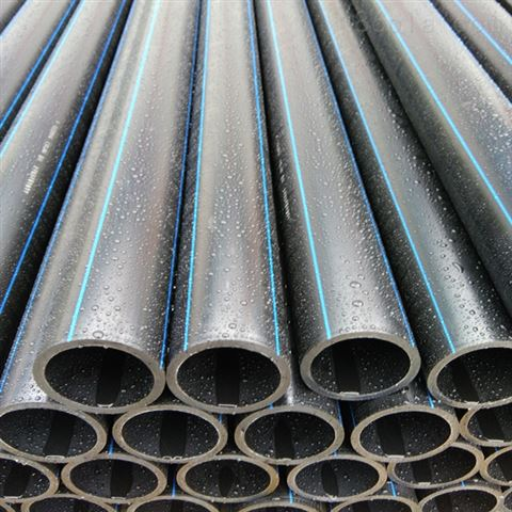
Common Uses of HDPE Pipes
HDPE pipes are commonly employed in an array of applications, largely due to their robust properties. Key uses include:
- Water Supply Systems: They are ideal for potable water distribution due to their non-toxic nature and resistance to corrosion.
- Sewage and Drainage Systems: HDPE pipes are extensively used in wastewater management systems for their durability and flexibility.
- Natural Gas Distribution: Their excellent resistance to stress and chemicals makes them suitable for transporting natural gas.
- Industrial Piping: HDPE’s strength and versatility allow for its use in various industrial applications, including chemical processing.
- Agricultural Irrigation: They’re often utilized in drip and sprinkler systems due to their lightweight and flexible characteristics.
- Trenchless Installations: Their resilience and ease of handling make them a popular choice for directional drilling projects.
The versatility of HDPE pipes enables them to meet the demands of various sectors while maintaining safe and efficient operation.
Temperature Limitations in Various Applications
The role of temperature in the operation, reliability, and longevity of materials and devices is critical and a matter of concern in all spheres. Applications have been established in all the major industries encompassing aerospace, halt, and production of products, consumer electronics, and other industries, whereby a range of hot and cold temperatures can be held responsible for the structural and operational suitability of various electronic parts. For instance, excessive heat in electronic devices causes the semiconductor to be worn out more than it needs to when subject to thermal expansion, oxidation, and soldering of adjoining components in a regular electronic device. Additionally, it is worth mentioning that very low temperatures may disrupt the continued conduction of electricity or sometimes harden certain materials.
Heat is at a premium in the use of producer goods, as most technologies are both capital and energy-intensive. Since it may also be applied to so many modern products, such as soda cans and other structural frameworks, the role of temperature is also well-defined in the industries. For example, in metallurgy, it is depicted by controlling the temperature through the different stages, such as annealing, quenching, and tempering, in order to control the properties of the material. Any form of vanishing of the thrusts may also provoke us to be subjected to problems arising from enhancing changing of genetic characteristics, during food processing, information about the current temperature, also called cold chain, is used gradually. And this all is in place to enhance or sustain the quality of foodstuffs for use and ensure the conducive duration of their shelf life.
Emerging areas such as quantum computing and high-temperature superconductors have brought to the fore the need to rethink temperature management. Tackling some of these devices makes so required atmosphere virtually indispensable because they are designed to walk on the edge. Quantum Computers are delicate systems that, in most cases, ought to be cooled towards zero temperature to avoid any blur or disturbance to the quantum states. Despite progress, high-temperature superconductors might still find it hard to have practical and economical cooling solutions.
Choosing the Right Pipe for Your Needs
Considering several factors, the correct pipe is to be matched with the right application, and this includes the material, the pressure range, the temperature allowance, and where the pipe will be in a system. This involves all kinds of pipes made from materials such as steel, copper, PVC, HDPE, and polyethylene, among others. These materials have their special application if one considers where they are used. For example, stainless steel pipes are normally resistant to corrosion and are used to convey high-pressure or high-temperature fluids from one place to another. PVC pipes are of low weight and cost and, as a result, are commonly used in drainage systems.
Among these is the diameter of the pipe together with the thickness, because they go a long way in withstanding pressure. Sometimes other factors have to be considered, for instance, the environment like the weather conditions it will be subject to, whether under the sun, the rain, chemicals, etc, that have the potential of degrading the materials over the course of time. Issues like flexibility and the ability to resist movements within the ground are highly valued when considering underground and buried pipelines. The availability of manufacturers’ specifications and industry regulations enables ingenious pipe selection while considering both endurance and performance of the pipe.
Making the best use of the available power and software, also allowing for the consideration of prevailing practical issues, field managers and related experts are reassured that the prescribed performance and satisfaction of other construction and conditions are in harmony with laid down procedures and related regulations.
What are the Alternatives to HDPE Pipe in High Temperature Applications?
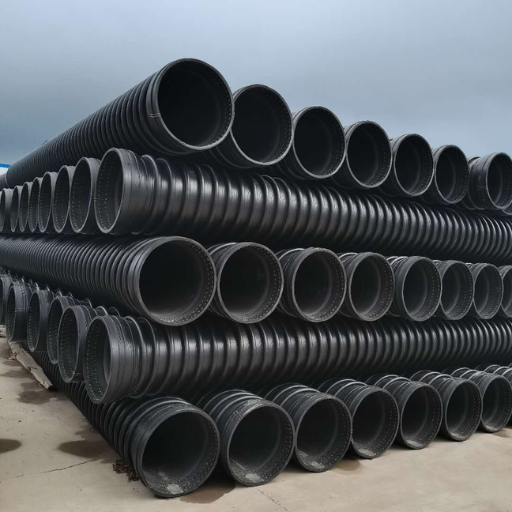
PVC and Other Plastic Pipes
Plastic pipes such as PVC and other plastic pipes like PVC-U, C-PVC, PVC-O MNM, PE-X, ABS, and SCH 40/80 PVC pipe are all available in the market today.
Here is a summary of what the table contains:
| Type | Key Use | Durability | Temp Range | Flexibility | Recyclable | Special Feature |
|---|---|---|---|---|---|---|
|
PVC-U |
Water, Waste |
High |
Moderate |
Low |
Yes |
Rigid, UV resistant |
|
C-PVC |
Hot/Cold Water |
High |
High |
Moderate |
Yes |
Chlorine resistant |
|
PVC-O |
Pressure Pipes |
Very High |
Moderate |
High |
Yes |
Strength & Flexibility |
|
PVC-M |
Gas, Water |
High |
Moderate |
Moderate |
Yes |
Impact resistant |
|
PEX |
Plumbing |
Moderate |
High |
Very High |
No |
Flexible, Easy Install |
|
ABS |
Outdoor Use |
High |
Moderate |
Low |
No |
UV & Cold resistant |
|
Schedule 40 |
Low Pressure |
Moderate |
Moderate |
Low |
Yes |
Affordable |
|
Schedule 80 |
High Pressure |
High |
Moderate |
Low |
Yes |
Thick walls |
Comparing Temperature Resistance of Different Materials
Various materials that can be used for pipe production are inappropriate to use, including steel, copper, cast iron, PVC, CPVC, PEX, ABS, and lined pipes.
| Material | Key Use | Durability | Temp Range | Corrosion | Cost | Special Feature |
|---|---|---|---|---|---|---|
|
Steel |
Heating, Gas |
High |
High |
Moderate |
High |
Fire-resistant |
|
Copper |
Water, Gas |
High |
High |
Low |
High |
Antimicrobial |
|
Cast Iron |
Drainage |
Very High |
Moderate |
Moderate |
Moderate |
Noise reduction |
|
PVC |
Water, Drain |
High |
Low |
Low |
Low |
Lightweight |
|
CPVC |
Hot Water |
High |
High |
Low |
Moderate |
Heat-resistant |
|
PEX |
Plumbing |
High |
High |
Low |
Low |
Flexible |
|
ABS |
Drainage |
Moderate |
Low |
Low |
Low |
Underground use |
|
Lined Pipes |
Chemicals |
Very High |
High |
Very Low |
High |
Corrosion-resistant |
How to Install and Maintain HDPE Pipes Under Various Temperature Conditions?
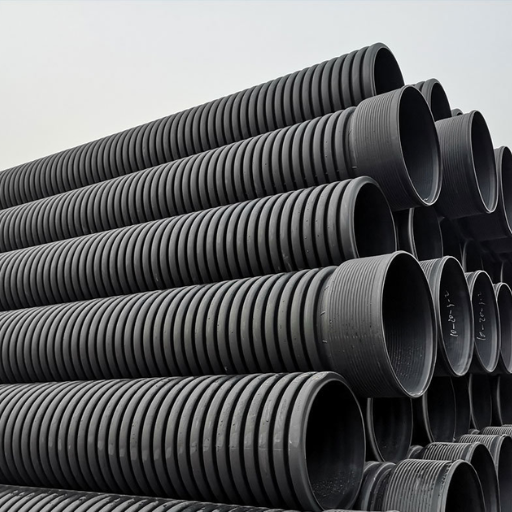
Installation Best Practices
Effective installation practices are critical to ensure the durability, efficiency, and safety of any system, particularly when dealing with complex or high-performance setups. Before initiating installation, pre-assessment of environmental conditions, such as temperature, humidity, and exposure to external elements, is essential to avoid operational inefficiencies or component degradation. It is recommended to follow the manufacturer’s guidelines meticulously to maintain warranty validity and maximize system lifespan.
Additionally, implementing proper anchoring and leveling techniques can prevent stress on equipment caused by vibrations or shifting. Installing protective components, such as weatherproof seals, thermal barriers, or insulation materials, can safeguard the system’s functionality against extreme temperatures or adverse weather conditions. Utilizing advanced diagnostic tools to verify wiring integrity and component alignment during the installation phase significantly reduces long-term maintenance costs.
Furthermore, adherence to local building codes and safety standards, including electrical and structural regulations, is mandatory to ensure compliance and avoid future legal complications. Comprehensive documentation of the installation process, including schematics, material specifications, and setup configurations, provides clarity for future inspections, troubleshooting, or upgrades. For optimal results, engaging certified professionals equipped with the latest technology and industry knowledge is highly recommended.
Maintenance Tips for Longevity
To ensure the longevity of your HDPE piping system, consider the following maintenance tips:
- Regular Inspections: Conduct periodic checks for any visible signs of damage or wear, such as cracks or leaks. Focus on gaskets, joints, and fittings, as these are common failure points.
- Cleaning: Keep the pipes free of debris and buildup. Use non-abrasive cleaning methods to avoid surface damage. Regular cleaning helps prevent blockages and maintains efficient flow.
- Temperature Awareness: Monitor temperature changes and their effects on your piping system. Be proactive in adjusting support and spacing to accommodate any thermal expansion or contraction.
- Professional Maintenance: Engage with professionals for in-depth inspections and maintenance, especially after extreme weather conditions or major operational changes. Their expertise can help identify issues that may not be immediately visible.
- Documentation and Record Keeping: Maintain detailed records of inspections, maintenance activities, and any repairs made to the system. This history is invaluable for tracking performance over time and can aid in troubleshooting future issues.
By adhering to these maintenance practices, you’ll enhance the reliability and lifespan of your HDPE piping infrastructure.
Handling Extreme Temperature Conditions
In environmental health, we experience hot or cold spikes, similarly challenging, stressful human health, and building and infrastructure facilities are the environment. The danger in hot conditions may be exposure to too much heat, which causes dehydration and, in rare cases, heatstroke. In contrast to this, the cold makes the people feel extreme discomfort because the physical activities also decrease drastically due to the risk of hypothermia, frostbite, and the human body’s reduced efficacy that comes with low temperatures. Temperatures related by the components of the infrastructure may of course bring about some changes in the materials used, a case in point the metal components may have some warping effects or become bigger as a result of the high temperatures while the low temperatures may result to the brittle effect on the materials where it could easily crack.
Increasing data suggests an increase in the occurrence of extreme temperatures, which is magnified on a global scale as a result of climate change. In the most recent example of this, the highest rates of warming of the polar sea ice, for example, have been double the estimated global rate; therefore, polar amplification. Consequently, the increases in the duration and intensity of heatwaves have been evidenced in the prevalence of temperature spikes in certain urban areas, which have an urban heat island effect.
Needless to say that prevention and preparedness should be not only adequate but is indispensable. With regard to high temperatures, there are also specific measures that mobile development, such as the incorporation of such concepts, has been encouraged, and these are increasing greenery, the use of more reflective roofing materials, and employing efficient water management systems. Such measures aid in minimizing heat and enhancing cooling through the regulation of heat held. When temperatures go to the other extreme, thicker insulation and good heating devices are also in a must, more importantly in areas with power failings of power. New inventions: enhanced weather forecast and condition data that is current enable one to foresee and prevent high temperatures effectively.
References
Frequently Asked Questions (FAQs)
Q: What is the temperature rating for HDPE pipes?
A: HDPE pipes, including PE pipe, typically have a temperature rating ranging from -20°C to 80°C, making them suitable for both low and high temperature applications.
Q: How does temperature affect the wall thickness of HDPE pipes?
A: The wall thickness of HDPE pipes, such as PE100, can be influenced by temperature changes. Higher temperatures may require thicker walls to maintain structural integrity and prevent rupture.
Q: Are HDPE pipes suitable for municipal water systems?
A: Yes, HDPE pipes, due to their high toughness and impact strength, are ideal for municipal water systems. They are used to convey millions of gallons of water efficiently.
Q: Can HDPE pipes be used in cold environments?
A: Absolutely, HDPE pipes are designed to function in cold environments, down to -20°C, without compromising their quality and performance.
Q: What are the benefits of using HDPE pipes in oil and gas applications?
A: HDPE pipes are highly resistant to chemicals and corrosion, making them an excellent choice for oil and gas applications. Their high density and durability ensure long-term reliability.
Q: What are the advantages of HDPE butt fusion for pipe fittings?
A: HDPE butt fusion provides a seamless and leak-free connection for pipe and fittings, ensuring a strong and durable joint that can withstand high pressure and impact loads.
Q: How does the recyclability of HDPE pipes impact their use in many industrial applications?
A: The recyclability of HDPE pipes makes them an eco-friendly option for many industrial applications. They can be reused and repurposed, reducing environmental impact and promoting sustainable practices.
Q: Are polyethylene pipes standardized by any international organizations?
A: Yes, polyethylene pipes are commonly standardized by organizations such as ISO and ASTM, ensuring they meet specific quality and performance benchmarks set by the industry.
Q: What factors should be considered in the design and selection of HDPE piping solutions?
A: When designing and selecting HDPE piping solutions, consider factors such as temperature range, wall thickness, hydrostatic pressure, and the specific requirements of the application, whether municipal, industrial, or otherwise.
Q: How does the impact strength of HDPE pipes benefit their use in sewerage systems?
A: The high impact strength of HDPE pipes ensures they can withstand point loads and backfill pressures, making them ideal for sewerage systems where durability and reliability are crucial.



